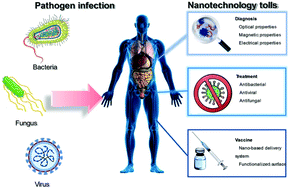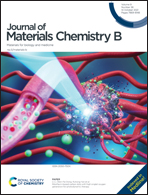Nanomedicine as a promising strategy for the theranostics of infectious diseases
Abstract
Infectious diseases caused by bacteria, viruses, and fungi and their global spread pose a great threat to human health. The 2019 World Health Organization report predicted that infection-related mortality will be similar to cancer mortality by 2050. Particularly, the global cumulative numbers of the recent outbreak of coronavirus disease (COVID-19) have reached 110.7 million cases and over 2.4 million deaths as of February 23, 2021. Moreover, the crisis of these infectious diseases exposes the many problems of traditional diagnosis, treatment, and prevention, such as time-consuming and unselective detection methods, the emergence of drug-resistant bacteria, serious side effects, and poor drug delivery. There is an urgent need for rapid and sensitive diagnosis as well as high efficacy and low toxicity treatments. The emergence of nanomedicine has provided a promising strategy to greatly enhance detection methods and drug treatment efficacy. Owing to their unique optical, magnetic, and electrical properties, nanoparticles (NPs) have great potential for the fast and selective detection of bacteria, viruses, and fungi. NPs exhibit remarkable antibacterial activity by releasing reactive oxygen species and metal ions, exerting photothermal effects, and causing destruction of the cell membrane. Nano-based delivery systems can further improve drug permeability, reduce the side effects of drugs, and prolong systemic circulation time and drug half-life. Moreover, effective drugs against COVID-19 are still lacking. Recently, nanomedicine has shown great potential to accelerate the development of safe and novel anti-COVID-19 drugs. This article reviews the fundamental mechanisms and the latest developments in the treatment and diagnosis of bacteria, viruses, and fungi and discusses the challenges and perspectives in the application of nanomedicine.



 Please wait while we load your content...
Please wait while we load your content...